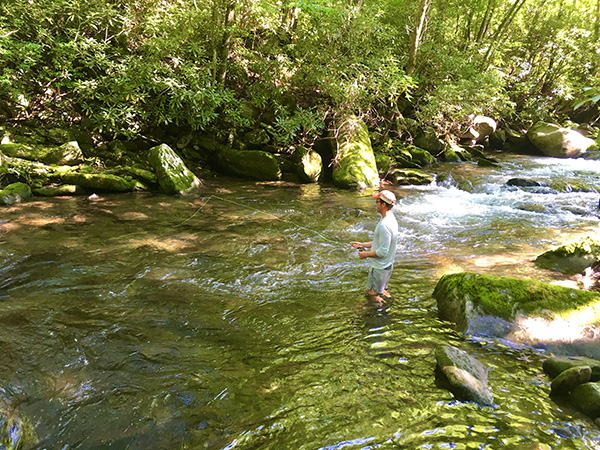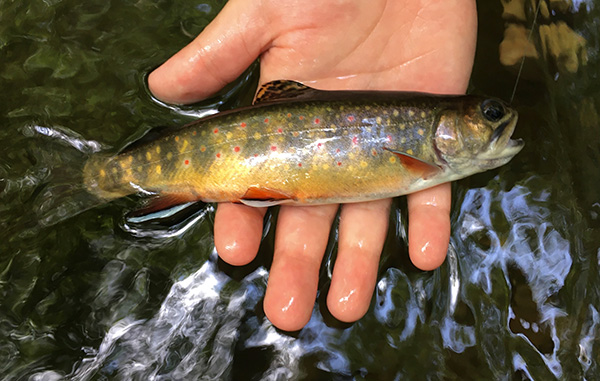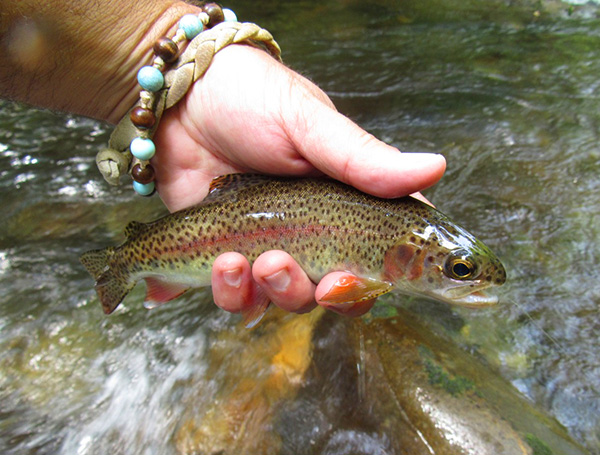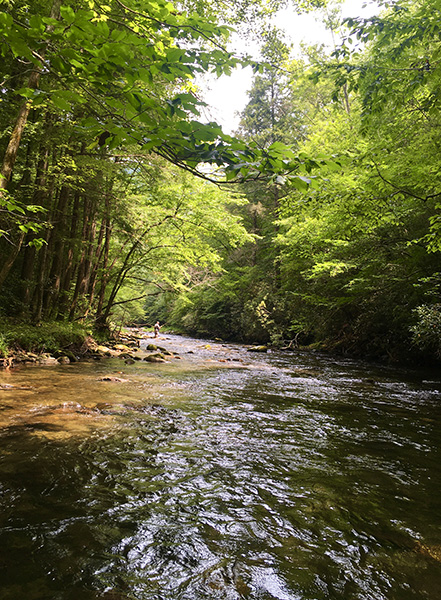We’ve seen the typical heat and humidity that come with August in the Smokies, but with well above average rainfall. Most of this has come in the form of afternoon thunderstorms so it’s not like we’ve seen days upon days of dreary weather. While August hasn’t officially come to an end and there’s more rain forecast for today, the month is shaping up to be among the wettest Augusts on record.
Most of the time when we think of August we think of hot days, dry weather and low water conditions in the Smokies. We a little bit of “sub-optimal” water conditions, but nothing that would extend to anything near drought. In fact, we’ve had a number of days in August where water conditions were similar to what you typically expect of May.
Here Comes Fall Fishing
While this has made fishing better (and guiding a bit easier), it also sets us up for some excellent fall fishing conditions. September and October are generally the driest months of the year in East Tennessee and the Smoky Mountains. However we end August is how we go into that dry period. Right now we’re in great shape and our extended seasonal forecast is calling for wetter than average conditions and cooler than average temperatures through September into October. After numerous autumn seasons with drought conditions (last year’s “flash drought” and the one in 2016 that led to the biggest wildfires in regional history), we’re sure looking forward to some ideal conditions.
Fly Selection
As always, dry fly fishing is the main way to go this summer. There isn’t much of anything to match when it comes to hatches. We’re still a little ways out from Blue Wing Olives making their fall appearance. Right now it’s an attractor game. All the old basics like Parachute Adams and Stimulators will work, but August is prime time for ants and beetles. We’ve always liked terrestrials in late summer, but ants and beetles can be pretty tough to spot on the water. We don’t guide with them all that much for that reason. Even with a bright wing they sit pretty low in the water and are easy to lose in the glare. Still, trout love them this time of year so give them a try.
Nothing wrong with a small nymph either. Basic beadhead patterns in #16-18 are never wrong from now all the way through fall. Consider using them as a dropper, though, because the fish are really on the dry flies more than subsurface in our experience. If you happen to be on the water after a storm when the water is running pretty high we’d encourage you to try a #8-12 stonefly nymph. Golden stoneflies are still hatching in the mountain streams so a Tellico Nymph or other dirty yellow nymph will be pretty accurate. Plunk them into a plunge that drops into a deep hole. Indicators are fine, but this type of fishing is best done with the “tight line” or Euro nymphing method.



